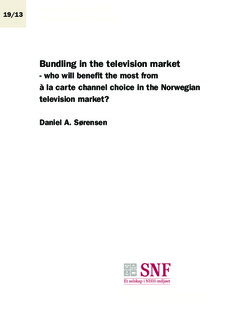| dc.description.abstract | Bundling of television channels has been heavily criticized by consumers, but is still observed in most television markets. In this paper I investigate the consequences of unbundling the Norwegian market, especially from the distributors’ and channels’ points of view.
Classic bundling theory does not apply particularly well to this market, and I therefore look at industry specific models which have helped to achieve a better understanding of the television market. Since the models have been developed in the US, I also discuss whether or not the US and Norwegian television markets differ. I find that the US industry models, with some modifications, also can be applied to the Norwegian market.
Interestingly, I find that the consumer-favored à-la-carte policy will not reduce the average household expenditure on television channels. Furthermore, the industry models indicate that the distributors and channels will be slightly better off under à la carte. | no_NO |
